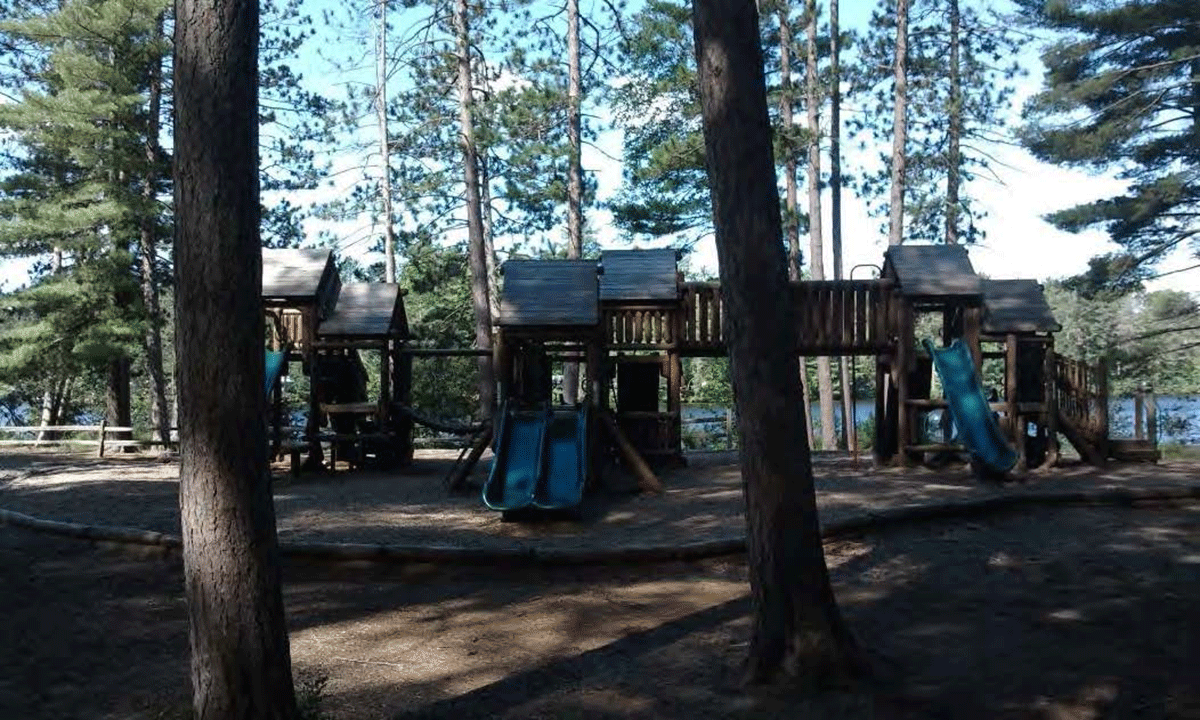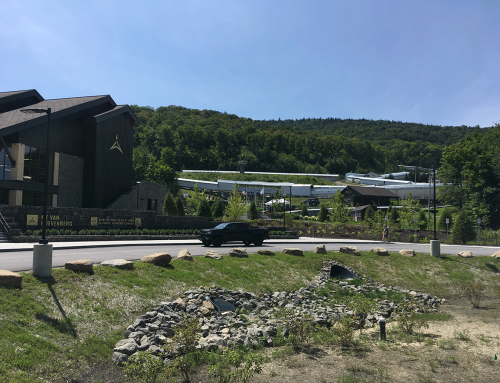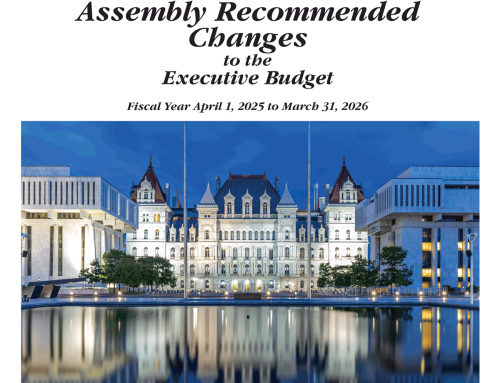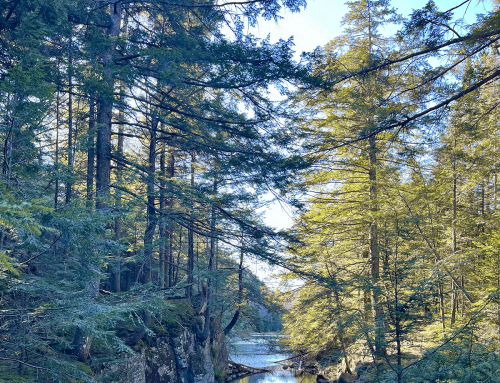Though incredibly popular and highly used, State Campgrounds in the Forest Preserve raise constitutional questions that should be resolved.
Recently, the Department of Environmental Conservation (DEC) proposed a draft amendment to the Cranberry Lake Campground and Day-Use Area Unit Management Plan (UMP). This amendment, if approved, would authorize DEC to construct a new manmade playground on the Forest Preserve. DEC’s proposal involves a playground with various equipment and rubber mats or tiles as the surface material, similar to the playground at the StateFrontier Town Campground in North Hudson, where the State owns a conservation easement, but the land is owned by the Town of North Hudson and Essex County. The DEC has far more latitude to build things on this conservation easement than it does on the Forest Preserve.
Protect the Adirondacks strongly supports exposing children to the natural wonders of the Forest Preserve. Indeed, some of the first wilderness experiences of many of our members, and their children, occurred there. However, a manmade playground is not necessary for children to enjoy the Forest Preserve. There are plenty of other things for them to do there, which are consistent with the purposes of the Forest Preserve, such as go for nature walks, fish, swim, canoe, and run around in the woods with their parents. For families that may wish to stay where there are more manmade facilities, there are many privately owned opportunities for renting or camping in the Adirondacks that are not located on the Forest Preserve.
More important than the unnecessary nature of playgrounds in the Forest Preserve is the questionable constitutionality of DEC campgrounds in the Forest Preserve. As discussed in detail below, the Constitution and the State Land Master Plan (SLMP) impose strict standards for the Forest Preserve. DEC is pressing, and likely crossing, the boundaries of legality with this proposal that seeks to further intensify use of the Forest Preserve with a manmade facility.
Consequently, we believe that DEC and APA should reject the proposed UMP amendment to add this manmade amenity to the Forest Preserve. Cranberry Lake Campground and Day-Use Area, unlike the Frontier Town Campground, is located in the Forest Preserve on lands classified as Intensive Use. Accordingly, the comparison to the playground or other amenities at Frontier Town Campground, which is not protected by the Constitution or the SLMP, is legally inapplicable and inappropriate.
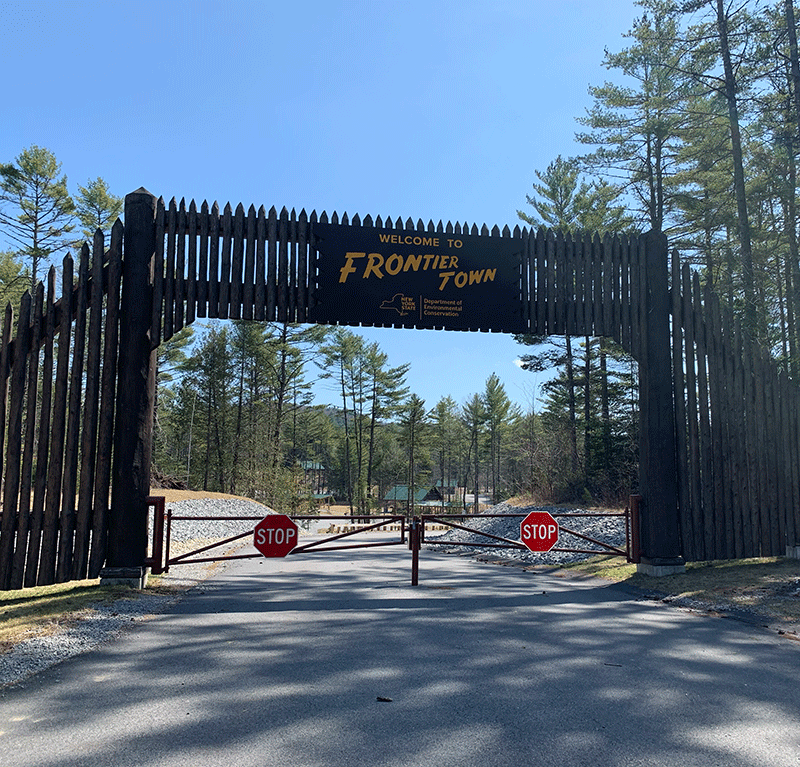
The Frontier Town Campground was built on lands where the State owns a conservation easement. As such, development of this facility was not bound by The Adirondack Park State Land Master Plan or the Forever Wild clause in the State Constitution.
DEC Campgrounds in the Forest Preserve are Constitutionally Questionable
The constitutionality of campgrounds with respect to Article 14 of the Constitution, the Forever Wild clause, has been a matter of historic controversy. During the 1967 Constitutional Convention, one delegate, Judge Charles Froessel, a retired Court of Appeals judge, argued that campgrounds were unconstitutional and that Article 14 needed to be amended to legitimize their existence. He argued for Article 14 to be amended to explicitly permit: “the construction, maintenance and operation of recreational campsites [campgrounds] bordering on or in the vicinity of state or county highways with necessary access, water supply and sanitation facilities, all of which shall be in keeping with the surrounding areas.” Records of the Proceedings of the Constitutional Convention of the State of New York, April fourth to September twenty-sixth, 1967 are available online at the New York State Library (go to Government Collections, New York State Constitutional Conventions, 1967, Proceedings, Volume 2, page 542).
Delegate Froessel stated that the Conservation Department (DEC’s predecessor agency), had “stretched the constitution and they have erected not only within the Adirondack Park system, but within the blue line, at least 40 [campgrounds] during the last three or four decades. There is no basis in law for their having done that. … Now, I am not criticizing the commissioners in the past for doing this . . . But at least there should be a legal foundation for it.” He also noted that the editor of the Conservation Department’s Conservationist magazine admitted that concentrated campsites (now campgrounds) “are certainly of doubtful constitutionality”.
Several arguments were made in opposition to the proposed constitutional amendment, including that the “forest preserve does not and is not intended to supply every recreational need. The ball fields, the bowling alleys and the developed facilities are elsewhere”. The proposed amendment was not approved by the delegates. Notably, in 1930, the Court of Appeals in Association for the Protection of the Adirondacks v. MacDonald, 253 N.Y. 234, 242 (1930) held that manmade sporting facilities are not permitted on the Forest Preserve because the “Constitution intends to take no more chances with abuses, and therefore, says the door must be kept shut”. As a result, the campgrounds and “developed facilities” that DEC continues to construct and manage have not been authorized in the Constitution.
To Avoid Violating Article 14, The Playground Should Not Be Approved
Simply put, a playground is not necessary for the public to enjoy the wild nature of the Forest Preserve and it is not authorized by the Constitution. “Improving recreation and the use and enjoyment of the preserve are laudable aims, but they were insufficient in [Association for the Protection of the Adirondacks v.] MacDonald to obviate the need for a constitutional amendment.” Protect the Adirondacks! Inc. v. New York State Dep’t of Env’t Conservation, 37 N.Y.3d 73, 84 (2021).
Accordingly, DEC is crossing a legal boundary by constructing more manmade amenities and facilities within State-owned campgrounds, which themselves are of questionable Constitutionality. Therefore, the proposed UMP amendment to install a new playground at the Cranberry Lake Campground should not be approved.
The Amendment Fails to Comply with the State Land Master Plan
The SLMP directs that “[t]he primary management guideline for intensive use areas will be to provide the public opportunities for family group camping, developed swimming and boating, downhill skiing, cross country skiing . . . visitor information and similar outdoor recreational pursuits in a setting and on a scale that are in harmony with the relatively wild and undeveloped character of the Adirondack Park.” SLMP at 41.
Significantly, there is no mention in the SLMP of playgrounds being an allowed facility within Intensive Use Areas. In fact, the SLMP states that the “more intensive recreational and service facilities” are located on private lands, which allows “a broader spectrum of recreational opportunities”. SLMP at 3. The SLMP also specifically states that the “economic viability of these private facilities should be a major concern in the development of pricing and operating policies for state intensive use areas”. Id. Based on this major policy concern for not competing with private campgrounds, and the fact that playgrounds are not authorized in the SLMP, DEC should not construct a playground in a campground on the Forest Preserve.
We also note that many, and perhaps most, of the existing campgrounds on the Forest Preserve do not have developed playgrounds such as the one proposed for the Cranberry Lake Campground. Playgrounds have little, if any, relationship to “opportunities for family group camping, developed swimming and boating … and similar outdoor recreational pursuits in a setting and on a scale that are in harmony with the relatively wild and undeveloped character of the Adirondack Park.” Id.
The draft UMP amendment to construct a manmade playground, however well-intentioned, does not comply with key provisions of the SLMP’s Guidelines for Management and Use of Intensive Use Areas including that camping in the Forest Preserve will be “in a setting and on a scale that [is] in harmony with the relatively wild and undeveloped character of the Adirondack Park”, and that “All campgrounds will be of a rustic nature without . . . elaborate facilities . . . constructed of natural materials to the fullest extent possible so as to blend with the natural environment”. Surfacing the playground with any kind of rubber or artificial grass is certainly not construction with “natural materials”, nor are plastic slides and metal parts of swings and playground equipment.
Finally, the Cranberry Lake Campground was originally opened with 15 camping sites in 1935, prior to the enactment of the SLMP, so it was not planned in accordance with the SLMP, which was adopted in 1972. It was significantly expanded in the 1960s. The campground now has a total of 171 campsites, in violation of the SLMP, which states that campgrounds should not exceed 150 individual camping sites. SLMP at 42-43. According to the SLMP (at 42-43), the campground must be “rehabilitated and reconstructed” to ensure that it and all of its facilities “have the minimum adverse impact possible on surrounding state lands”.
The campground should not be further expanded and intensified with a playground because it will violate the provisions of the SLMP and further exacerbate existing SLMP violations.

